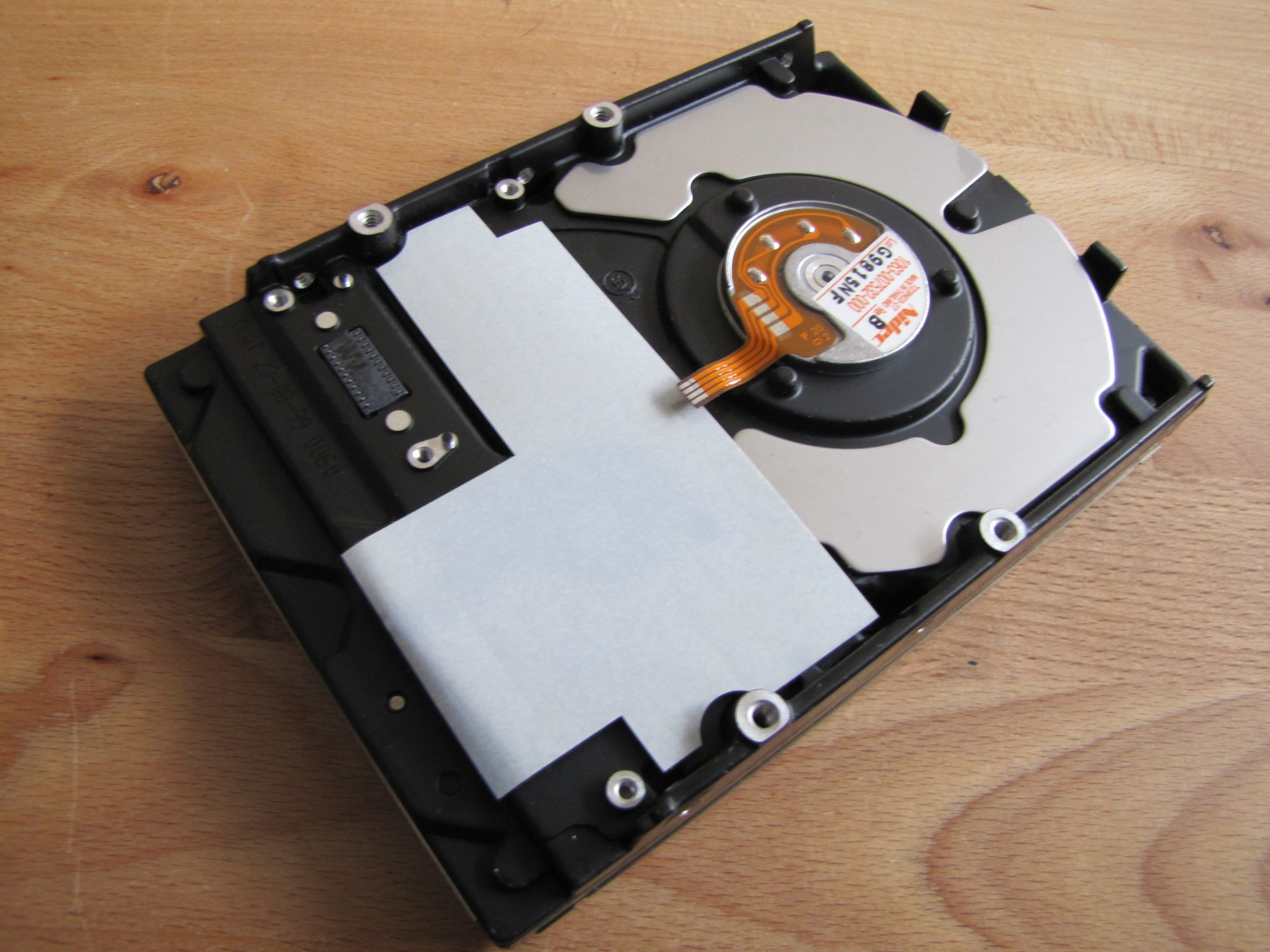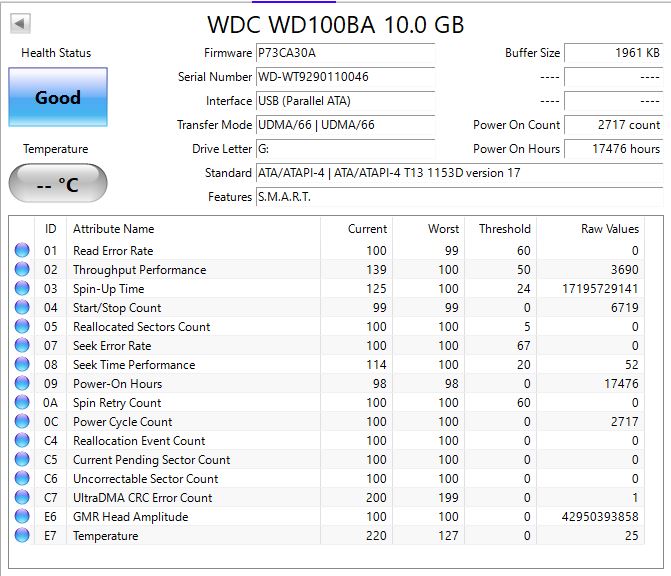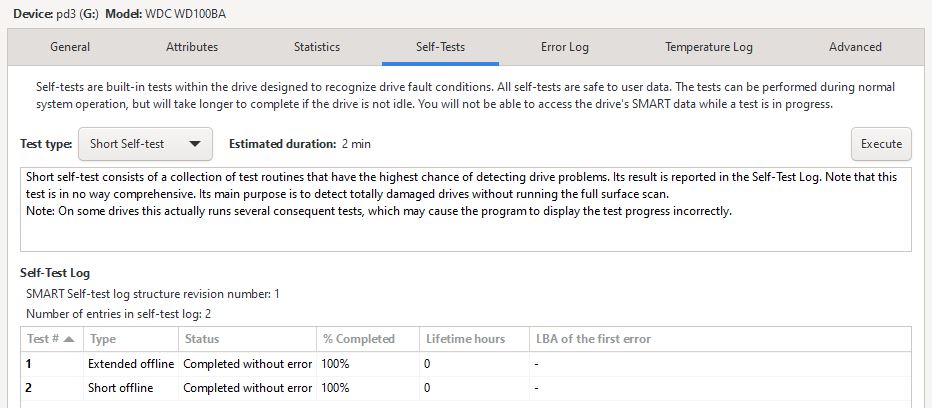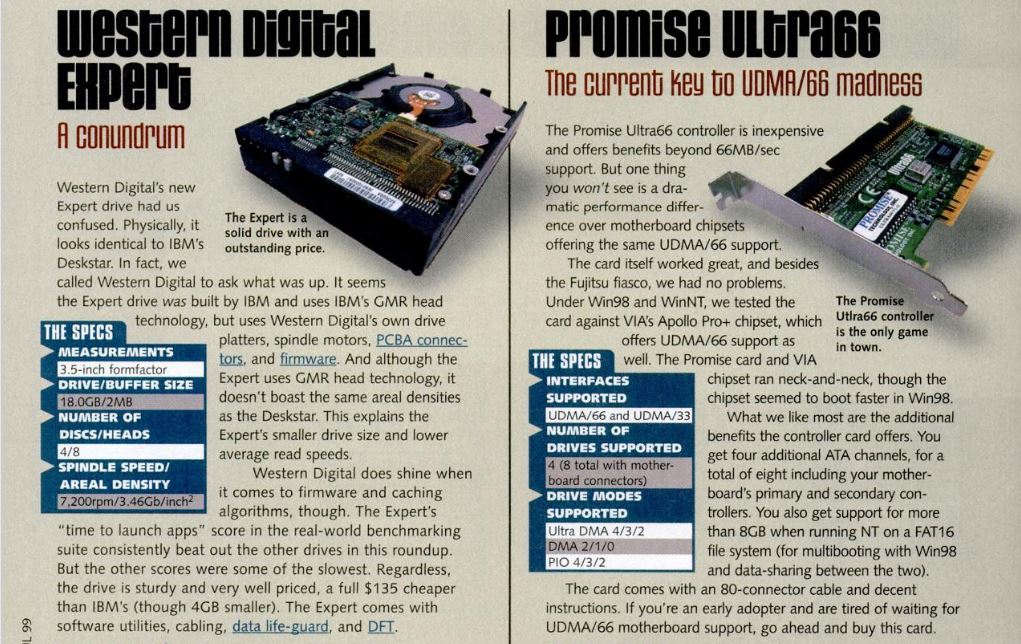What is in essence a Western Digital produced DPTA-371020 from the Deskstar 34GXP series, a familiar sight makes itself known, but with a more unusual story. This drive hails from the era where Western Digital really were on their knees, experiencing sharp losses.
Like NEC had done only a couple years prior, Western Digital turned to IBM to license their drive designs, with much success to follow.

Drive Attributes -------------------------------------- Western Digital Expert WD100BA-60AK -------------------------------------- Capacity 10.2GB Mfc Date 1999-10-09 Format 3.5" Interface PATA Platters 2 Heads 3 Cache 2MB RPM 7200 Origin Singapore (WD) Codename Plide (IBM) / Tride (WD) --------------------------------------
Before that of IBM’s insistence with ramp-loading designs, this one uses a CSS-based (contact start/stop) implementation. While the succeeding 40GV & 75GXP series were surely terrible, at least they cemented IBM’s ramp-loading ideology into the future. This drive is a later Expert variant, as the series was initially served under 22GXP design, before switching to 34GXP based architecture. This included a completely different model identifier layout.
Given that this drive only has 3 heads, the top surface being unutilised, each surface has an approximate density of 3.4GB. Western Digital were limited to 27.3GB in capacity with the WD273BA, being the same as a DPTA-372730 in design. NEC had the same limitation, 4 platter configurations being the maximum allowance under contractual agreements with the 34GXP’s. After all, giving away IBM’s key 5 platter capacity advantage to competing vendors wouldn’t be an ideal move.

This drive was produced in Singapore, in one of Western Digital’s existing factories. Western Digital’s other major factory in Malaysia wasn’t excluded, being another manufacturing location of this series. In a move of individuality, the label cut-out is entirely different, recycling next to nothing from IBM’s label design like NEC had done.
Originally, this drive was in a Compaq machine, serving a relatively unextraordinary existence. The asset tag sticker fell off, but there are a few other OEM indications on the label itself, particularly with the OEM identifier within the model number.

Compared to the usual 34GXP, no major alterations to the design were made. Expectedly so, assuming the limitations IBM imposed were strict enough, which would be the main presumption here. There is one interesting supplier difference though, as seen below.

As seems all too common with design reproductions, the choice of the spindle motor supplier remains the major differential. Western Digital used Nidec motors for a very long time prior to these drives, making the presence of the brand on this drive to be an expected outcome. It’s a neat difference compared to how IBM & NEC chose their motor suppliers, nonetheless.
At the end of the day, it’s just a standard three-phase BLDC motor.

From here, there aren’t really any differences to spot, compared to a standard 34GXP.

The cast base itself is marked as being produced two months before the drive was finalised.
Western Digital ended up stamping some information under the foam, but it doesn’t reveal all too much.

The PCB itself is quite unextraordinary. The usual Mitsubishi microcontroller, Samsung cache & Hitachi spindle motor controller. Western Digital stuck to what was provided, probably as a result of the non-existent wiggle room entertained within the deal. It surely must have been all too tempting otherwise.

Compared to a 34GXP, Western Digital had a little more room to play with the firmware. By that, literally nothing is different aside from the identification model. At least it’s more than NEC did…
This one has had quite a bit of use time, but it’s not too bad all things considered. It’s in perfect health, as one would expect from 34GXP’s, a design which has generally held up quite well.

It’s nice to see the tests run at the factory present in the self-test log, usually being a blank canvas instead.


Nonetheless, the Expert series was quite successful for the company, even if modern Western Digital attempt to sweep it under the rug in terms of documentation. While they may want us to forget this past exchange, history will forever haunt them with these superbly exceptional models.
If you missed the video I made on this drive, you can find it here:
References:
[1] Maximum PC (1999), Issue July 1999, 116 pages, Vol. 4, No. 7, ISSN 1522-4279, Published by Future US, Inc., Acquired from: https://books.google.com/books?id=1wEAAAAAMBAJ
[2] Maximum PC (1999), Issue March 1999, 118 pages, Vol. 4, No. 3, ISSN 1522-4279, Published by Future US, Inc., Acquired from: https://books.google.com/books?id=2gEAAAAAMBAJ